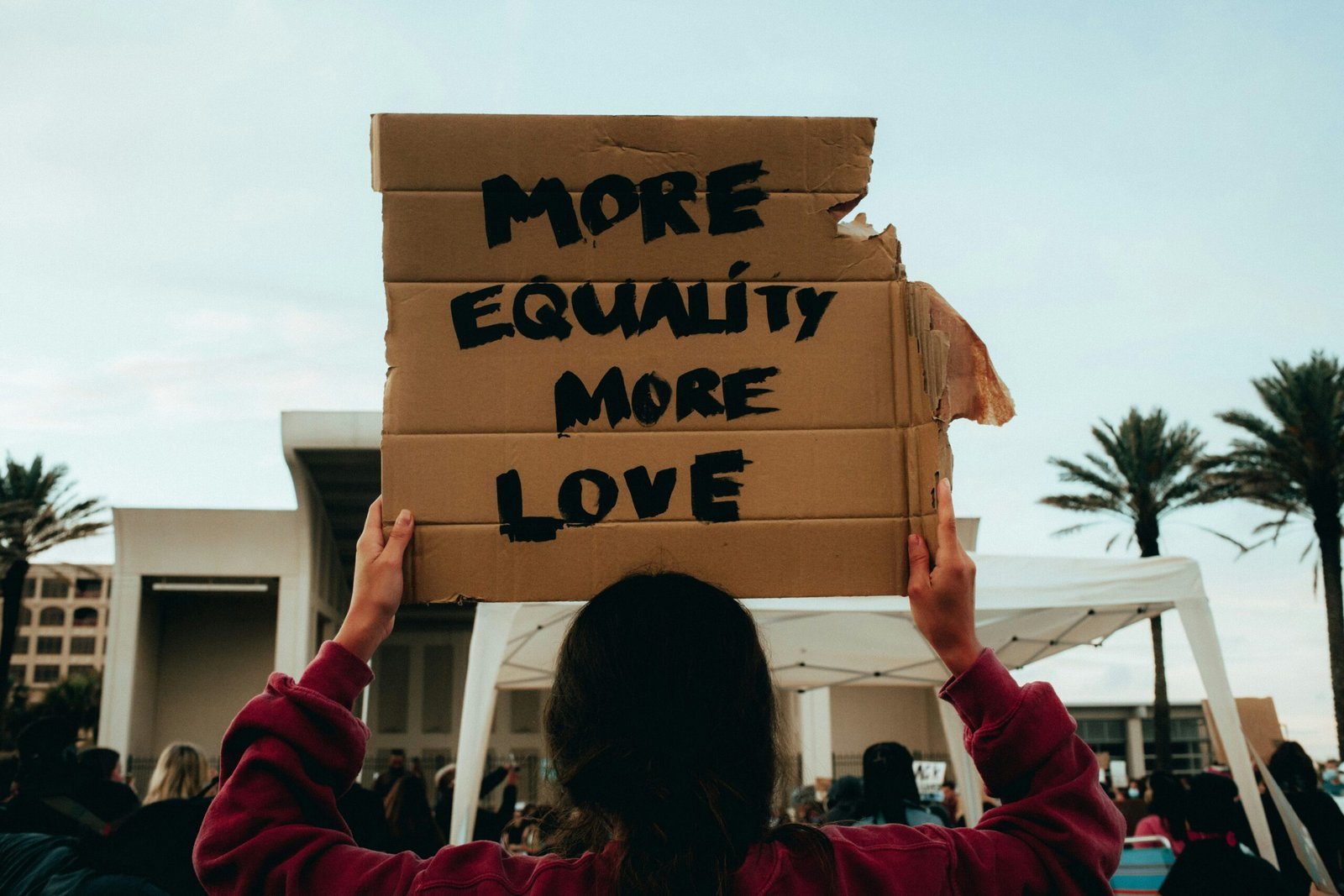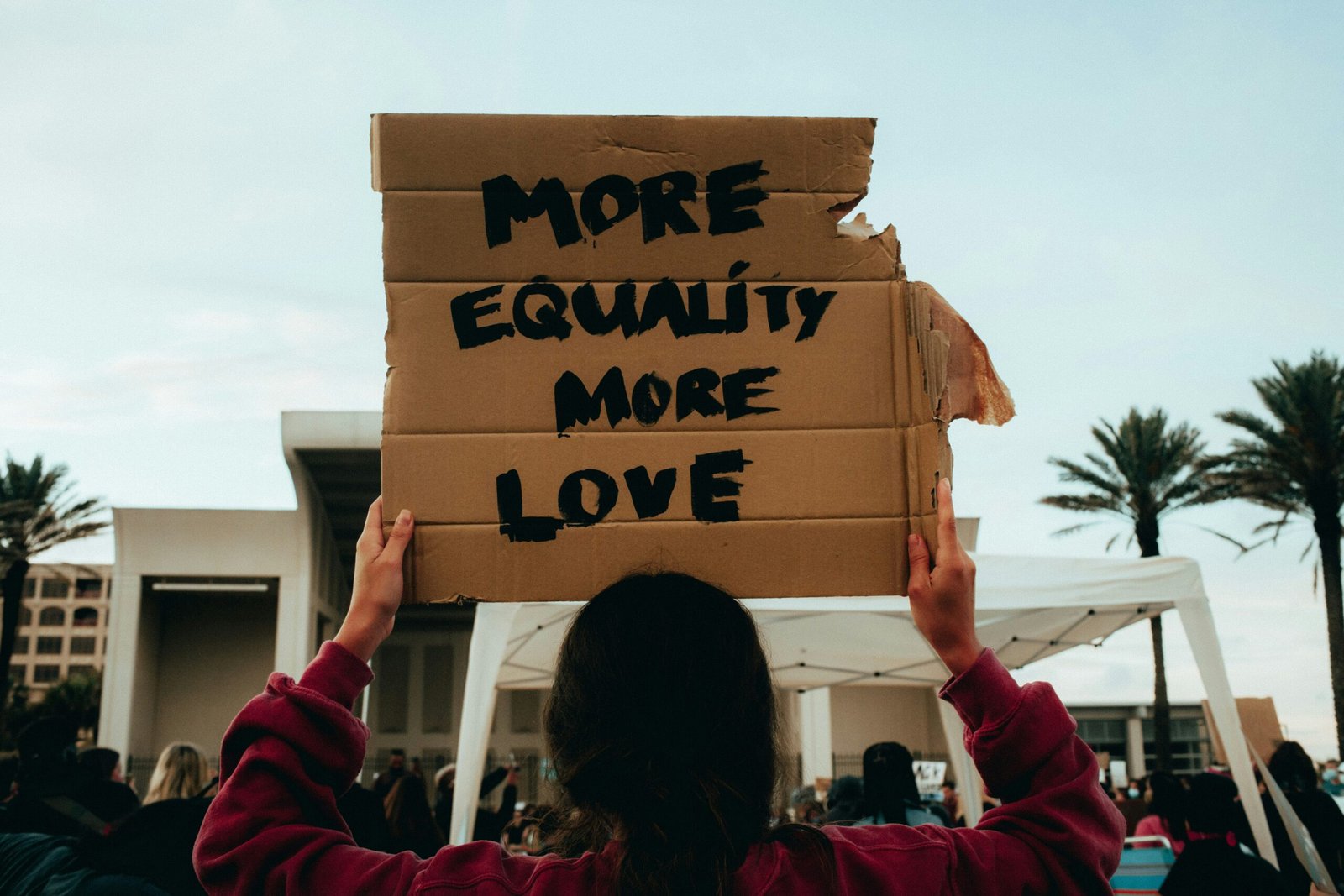
Understanding Systemic Inequality
Systemic inequality refers to the ingrained disparities that exist within the structures and institutions of society, leading to unequal outcomes for different groups of individuals. This form of inequality manifests in various dimensions, including economic, racial, and gender-based disparities. Understanding systemic inequality requires a comprehensive examination of the historical context, social frameworks, and entrenched practices that contribute to its persistence.
Economic inequality, for example, is characterized by unequal distribution of resources, wealth, and access to opportunities. In many regions, the wealth gap between different socioeconomic classes has widened, allowing a small percentage of the population to amass significant wealth while a larger group struggles to meet basic needs. Such disparities can be attributed to a variety of factors, including discriminatory practices in hiring, wage disparities, and unequal educational opportunities which reinforce economic stratification.
Racial disparities also illustrate systemic inequality, as evidenced by the historical and ongoing marginalization of minority groups. For instance, systemic racism is often perpetuated by biased policies, discriminatory law enforcement practices, and limited access to quality education and healthcare. These conditions create a cycle of disadvantage that significantly impacts the life chances of individuals from affected communities. The structural barriers that prevent equitable treatment serve to entrench these inequalities further.
Gender-based disparities represent another facet of systemic inequality, where women and gender minorities experience inequities in wages, representation in leadership roles, and access to reproductive health services. Financial discrimination, societal expectations, and institutional barriers contribute to ongoing challenges that affect women’s advancement in both the workplace and broader society.
In summary, systemic inequality is a multifaceted issue, deeply rooted in societal structures that favor certain groups over others. Recognizing the historical context and the various forms this inequality takes is essential in identifying pathways towards social justice and equity.
The Concept of Social Justice
Social justice is a multifaceted principle that strives to promote equity, fairness, and inclusion within society. At its core, social justice seeks to address the systemic inequalities prevalent in various dimensions such as economic status, race, gender, and disability. By recognizing the diverse forms of marginalization, social justice advocates for a framework that ensures marginalized groups have equal opportunities and protections under the law.
One significant aspect of social justice is the principle of equity, which emphasizes the need for interventions tailored to address specific needs based on historical disadvantages. It contrasts with the concept of equality, where identical treatment is afforded to all individuals, regardless of their unique circumstances. Although equality is a worthy goal, equity recognizes that systemic barriers often require differentiated strategies to achieve fair outcomes.
Fairness is another key component of social justice, manifesting in the provision of just policies, practices, and resources. Fairness demands not only impartiality in treatment but also the eradication of discriminatory practices that disproportionately impact vulnerable populations. Furthermore, inclusion encourages active participation and representation of all segments of society, ensuring that diverse voices contribute to decision-making processes. Inclusive frameworks aim to dismantle power dynamics that perpetuate exclusion.
Various theoretical frameworks illustrate these principles, including Rawlsian justice, which emphasizes distributive justice to address inequalities through the “difference principle.” Feminist theories expand this discourse by analyzing gender disparities and advocating for the recognition of unpaid labor. Each framework extends the discourse on social justice by establishing moral and ethical imperatives that drive action towards a more equitable society. By examining and implementing these principles and frameworks, the pursuit of social justice can significantly impact systemic inequalities, ultimately fostering a more just and fair society.
Historical Attempts at Achieving Social Justice
The pursuit of social justice has been a pivotal aspect of human history, manifesting through various movements aimed at redressing systemic inequalities. Among the most significant are the civil rights movements of the 20th century, which sought to dismantle racial discrimination and secure equal rights for marginalized populations. The American civil rights movement, spearheaded by figures such as Martin Luther King Jr. and Malcolm X, highlighted the injustices faced by African Americans and produced landmark legislation, including the Civil Rights Act of 1964. These events underscore the power of collective action and the importance of grassroots mobilization in advancing social justice.
Labor rights movements also played a crucial role in the fight for social justice, demonstrating how economic disparities can perpetuate systemic inequality. Workers across various industries organized strikes and protests to demand fair wages, safe working conditions, and the right to unionize. Events such as the Haymarket Affair in 1886 and the Pullman Strike in 1894 galvanized public attention and led to significant reforms in labor laws. These movements revealed not only the economic dimensions of social justice but also the interconnectedness of workers’ rights with broader social issues.
Furthermore, anti-colonial struggles throughout the 20th century illustrated the desire for self-determination and equality among oppressed nations. Leaders like Mahatma Gandhi in India and Nelson Mandela in South Africa exemplified the fight against colonial rule and systemic oppression. Their efforts were not without challenges, as these leaders navigated the complexities of political power, national identity, and social justice in post-colonial contexts. The legacies of these movements emphasize the necessity for sustained engagement and solidarity among diverse groups striving for equity.
These historical narratives provide vital lessons for contemporary movements. While progress has been achieved, the persistent existence of systemic inequality highlights the need for continued advocacy, coalition-building, and transformative strategies to realize the ideals of social justice. Examining past successes and failures equips modern initiatives with the knowledge to effectively address the multifaceted nature of injustice today.
Case Studies: Successes and Challenges
Social justice movements around the globe provide a rich tapestry of successes and challenges, highlighting the multifaceted nature of advocating for equity in a world marked by systemic inequality. One notable example is the civil rights movement in the United States during the 1960s. Led by figures such as Martin Luther King Jr., the movement effectively employed nonviolent protests to challenge segregation and discrimination. The eventual passage of the Civil Rights Act of 1964 and the Voting Rights Act of 1965 represented significant victories in dismantling systemic racial injustices. However, the movement faced considerable opposition, including violent backlash and legislative hurdles, illustrating the arduous journey toward achieving social justice.
Across the Atlantic, the Apartheid era in South Africa serves as another poignant case study. The African National Congress (ANC), with influential leaders like Nelson Mandela, mobilized a wide range of strategies, from peaceful protests to armed resistance. The dismantling of Apartheid in the early 1990s culminated in the establishment of a democratic government represented by all racial groups, showcasing a remarkable achievement in social justice. Yet, the aftermath has revealed ongoing challenges related to economic inequality and political corruption, demonstrating that legal reforms alone do not ensure social equity.
In recent years, the #MeToo movement has emerged as a critical campaign addressing gender-based violence and workplace harassment in various countries. This movement has successfully raised awareness and prompted discourse around systemic misogyny, leading to significant policy changes in workplaces and increased accountability for perpetrators. Nonetheless, the movement has faced resistance and backlash in some sectors, revealing the difficulties in shifting deep-rooted societal attitudes towards gender equality.
Each of these case studies underscores the complexities inherent in social justice movements, where the interplay of strategy, societal norms, and institutional resistance can profoundly influence outcomes. Understanding these nuances can inform future efforts aimed at confronting systemic inequality and advancing social justice worldwide.
Role of Policy and Legislation
Government policy and legislation play a pivotal role in addressing systemic inequality and promoting social justice. In a society marked by disparities, effective policies can either mitigate these inequalities or, conversely, exacerbate them. Historically, laws such as the Civil Rights Act of 1964 and the Fair Housing Act of 1968 have been instrumental in advancing social justice. These legislative measures aimed to dismantle discriminatory practices and ensure equal opportunities for marginalized communities. Their enactment demonstrated how political will, combined with advocacy, can lead to transformative change.
However, the effectiveness of such policies is often contingent upon their implementation and ongoing political support. For instance, while the aforementioned laws laid the groundwork for progress, contemporary challenges highlight the necessity for policy evolution. Issues like mass incarceration, economic disparity, and access to quality education reflect gaps that require targeted legislative action. While certain laws have been passed to address these issues, there remains significant room for improvement and reform. Policy approaches such as affirmative action and social welfare programs aim to rectify past injustices and create equitable opportunities, but they continue to face criticism and legal challenges that hinder their efficacy.
Advocacy and grassroots movements have emerged as critical components in the legislative landscape, pushing for reforms that tackle systemic inequality head-on. Political will is essential; without it, even the most well-crafted policies may languish without the necessary resources and commitment for effective implementation. As such, the dynamic interplay between advocacy, policy formulation, and social movements serves as a key driver for systemic change. Engaging diverse stakeholders in the policymaking process, including marginalized communities, can foster a more inclusive approach to legislation, further enhancing efforts toward achieving social justice.
The Impact of Technology and Social Media
In recent years, technology and social media have profoundly transformed the landscape of social justice activism. Various online platforms have empowered individuals and communities to mobilize efforts, raise awareness, and disseminate information at an unprecedented scale. The accessibility and immediacy of technology have enabled grassroots movements to flourish, creating a space where voices of marginalized groups can resonate globally.
Social media platforms such as Twitter, Facebook, and Instagram have emerged as vital tools for activists. For instance, during the Black Lives Matter movement, hashtags like #BlackLivesMatter facilitated the rapid spread of information about systemic inequalities and instances of police brutality. These platforms not only amplified voices but also fostered solidarity among diverse groups, encouraging collective action against injustice. The ability to share real-time updates, personal stories, and resources has fostered a sense of community and urgency in mobilizing efforts for social change.
However, the impact of technology on social justice activism is not without its challenges. The rapid dissemination of information can lead to the spread of misinformation, which can undermine genuine efforts and create division among activists. The phenomenon of “slacktivism” also poses challenges, where individuals may feel satisfied with merely sharing information online rather than engaging in meaningful offline action. Additionally, tech companies often face scrutiny for their role in censorship, data privacy issues, and algorithm biases that can shape the narratives surrounding social justice disparity.
Despite these drawbacks, technology and social media continue to play an integral role in the ongoing fight for equality and justice. Recent examples of digital activism, such as the global response to climate change and the #MeToo movement, emphasize the power of collective digital action to challenge systemic inequalities. The evolving relationship between technology and social justice highlights a dual-edged sword, offering both advantages and obstacles that activists must navigate in pursuit of their goals.
Collective Responsibility and Intersectionality
Collective responsibility plays a critical role in the pursuit of social justice, particularly in a world where systemic inequality is prevalent. This concept emphasizes the shared duty of individuals and communities to act against injustices that affect marginalized groups. Acknowledging that social issues do not exist in isolation is essential; rather, they are often interconnected through various dimensions such as race, gender, class, and sexuality. This interconnectedness is encapsulated within the framework of intersectionality, which examines how different forms of discrimination and privilege can overlap and influence one another.
Understanding intersectionality allows social justice movements to recognize and embrace diverse perspectives, ultimately strengthening their efforts. Different identities may experience unique forms of oppression, and a one-size-fits-all approach to social justice may inadvertently ignore the nuances of these experiences. For instance, a Black woman may face discrimination that is not solely based on her race or gender but instead arises from the confluence of both factors. A comprehensive understanding of intersectionality ensures that these complexities are accounted for, granting a fuller picture of the barriers that marginalized groups encounter.
This approach fosters inclusivity, encouraging advocates to listen to the voices of those who are often silenced. By highlighting the specific challenges faced by various communities, social justice movements can tailor their strategies, ensuring that they address the root causes of inequality effectively. Collectively, individuals who understand their shared responsibility can work together to dismantle systems that uphold discrimination and exclusion. In contributing to this collective effort, we can move closer to achieving social justice that is equitable and inclusive for all, recognizing that no single narrative can capture the entirety of systemic inequality.
Future Possibilities for Social Justice
The aspiration for social justice in a landscape permeated by systemic inequality poses significant challenges, yet emerging trends and grassroots movements suggest a hopeful direction for change. One of the most striking developments is the rise of community-led initiatives that empower marginalized groups, enabling them to take control of their own narratives and fight for their rights. This grassroots engagement cultivates awareness and builds solidarity, allowing for a collective response to injustices that often go unchecked within traditional structures.
Innovative approaches, such as restorative justice and participatory budgeting, are gaining traction as methods to not only address issues of inequality but to also redefine power dynamics within communities. Restorative justice focuses on rehabilitation rather than punishment, emphasizing the importance of understanding the root causes of conflict and inequity. By integrating community members into the decision-making processes, participatory budgeting allows citizens to have a direct say in the allocation of public funds, thereby addressing systemic imbalances that have historically disenfranchised them.
Furthermore, the digital landscape has become a powerful tool for advocacy, enhancing the reach of social justice movements. Social media campaigns have the potential to inform and mobilize large numbers of individuals quickly, creating a global network of activists who can share resources and strategies for addressing systemic inequities. The ongoing dialogue facilitated by technology serves not only to raise awareness but also to pressure policymakers towards accountability and reform.
Critical areas for advocacy include equitable access to education, healthcare, and economic opportunities, as well as accountability in law enforcement and legislative processes. By focusing on these sectors, social justice advocates can work towards tangible reforms that dismantle systemic barriers. The optimism generated by these emerging trends suggests that while the path to social justice is fraught with difficulty, it is not impossible and may indeed be within reach if collaborative efforts continue to gain momentum.
Conclusion: The Path Forward
In contemplating the significant challenges posed by systemic inequality, it is vital to recognize that the pursuit of social justice remains not only essential but also achievable. Throughout this discussion, we have examined the deep-rooted structures that perpetuate inequality and explored the multitude of ways in which these conditions affect individuals and communities. Acknowledging these systemic barriers is the first step in addressing them; however, it is imperative to engage actively in efforts aimed at reforming these unfair systems.
The road to social justice is undoubtedly complex, but it is paved with opportunities for meaningful change. Individuals, communities, and organizations can play vital roles in advocating for equitable policies and practices. This might involve supporting legislation or initiatives that address systemic biases, participating in community dialogues aimed at raising awareness, or volunteering with organizations committed to uplifting marginalized groups. Furthermore, fostering a culture of empathy and understanding among diverse populations can facilitate collaborative solutions that benefit all parties involved.
It is also essential for individuals to engage with ongoing educational efforts that shed light on the nuances of systemic inequality. By understanding the historical context and current implications of these issues, advocates for social justice can cultivate a more informed and compassionate approach to activism. This engagement must extend beyond awareness into actionable steps that challenge the status quo and push for equitable treatment in all spheres of society.
As we move forward in our collective quest for social justice, it is crucial to remain hopeful and committed, recognizing that every small effort contributes to a larger movement. Through perseverance and solidarity, we can strive to dismantle the systems of inequality that hinder progress, ultimately fostering a more inclusive and just world for all individuals.


